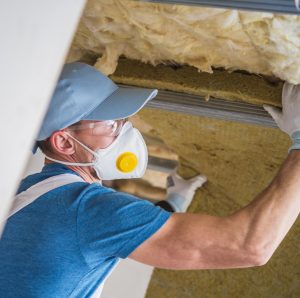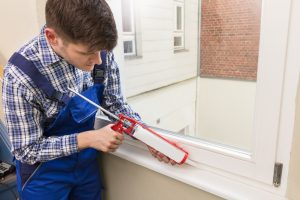Being the proud owner of a period home doesn’t mean you have to suffer with high energy costs and uncomfortable temperatures.
If you’re the proud owner of a Victorian home, it’s likely that you take preserving the building’s integrity—such as the original woodwork, wood floors, and stained glass windows—very seriously.
But it’s also pretty likely you experience uncomfortable drafts and high energy costs that you’d like to fix.
So how do you make a Victorian house more energy efficient? Should you replace all the windows to eliminate drafts? Or do you need to risk damaging the original walls to insulate?
Not necessarily.
In this guide, you’ll learn what it takes to make your Victorian house energy efficient—without harming the original character of your property.
And the good news is there are proven, expert-recommended ways to increase your home’s energy efficiency and comfort—all without sacrificing your home’s history or over-modernizing.
How do you make a Victorian house more energy efficient?
Here’s the big secret to Victorian house energy efficiency: The best energy-saving upgrades aren’t seen at all—they’re felt.
There are 3 critical upgrades that have the most significant and lasting impact on your home’s energy efficiency:
- Upgraded attic insulation
- Professional air sealing
- Energy-efficient HVAC
You’ll learn exactly how the above upgrades work together to increase your home’s efficiency later on in this article.
But it’s important to first understand why these upgrades are so crucial to lasting energy efficiency: The U.S. Energy Information Administration (EIA) estimates that over 51% of your home’s energy consumption is for heating and cooling alone (1).
It’s not your dishwasher, refrigerator, or lightbulbs that are usually causing most of the wasted energy in your older home—it’s heating and cooling.
Let’s dive into why insulation, professional air sealing, and efficient HVAC are so crucial for improving energy efficiency in Victorian houses—and how they work together to make your home more comfortable.
Insulating a Victorian house: Upgrade insulation for better energy use
If you’re an experienced homeowner, you might be thinking, Of course home insulation is key to better energy use. But simply rolling out some additional batts of insulation in your attic isn’t going to cut it. And here’s why.
First, there’s a good chance that the thermal boundary (the border between your home’s inside temperature and outside weather) in your Victorian house simply isn’t up to modern standards.
It’s crucial to look at all the elements of your house’s thermal boundary, because if this boundary is too porous or not insulated correctly, your house will be too hot in summer and too cold in winter.
In other words, it’s important to find an expert to analyze your house and recommend the best strategy.

Also, attic insulation is a major factor in creating your home’s thermal boundary, and you need to get it exactly right. Even if your old home’s insulation has been upgraded since it was originally built 100 years ago, insulation wears down over time. And if insulation upgrades aren’t installed professionally, vital areas that need insulation to create a successful thermal barrier (like hidden attics) can be missed or under-insulated.
Or, worse yet, if insulation is installed incorrectly, your home could accidentally be over-insulated, which can cause moisture problems and mold.
In short? When it comes to making a Victorian house comfortable, a shrewd insulation strategy and modern climate control techniques are your best friends.
And if you’re wondering if all of your Victorian house’s original walls need to be insulated, we have some good news: It may not be necessary after key insulation upgrades are installed by an expert. Which is definitely a win and reduces the risk of damage to your home’s original wall coverings and structure.
How to insulate Victorian windows
While we’re on the topic of home insulation, let’s dive into insulating Victorian windows.
You don’t necessarily need to upgrade or replace the original wooden windows in your home to increase your overall efficiency or permanently fix an old, drafty house.
If your home’s original windows haven’t received TLC in decades, it might be time to get them reglazed. Investing in expert window repair, rather than replacing all your windows entirely, might be the proper fix. Check out How to Fix Drafty Windows to learn more.
Overall, upgrading your home’s insulation (along with professional air sealing) can eliminate window cold air drafts, heat escape, and home airflow issues for good—without the big upfront expense of installing new windows throughout your home.
Yes, in some cases you might need to actually fully replace the original windows of your Victorian house to increase efficiency. But professional insulation and air sealing take care of the problem most of the time (and allow you to keep the original features of your home!).
Air sealing: The magic fix every Victorian house needs
Proper home ventilation is a precise science. A good ventilation strategy will keep inside air in and outside air out, all the while working to reduce moisture retention in your home’s structure.
So what’s plaguing your house’s ventilation? Air holes. Specifically, the gaps, cracks, and seams that form over time as the structure of the house shifts and settles.
These gaps are called air leaks, and while every house has them, older homes are particularly prone to air leakage issues. These gaps form around light and plumbing fixtures, doors and windows, and in your house’s foundation and attic. And although they might be small, they contribute to a significant amount of your home’s heating and cooling load and overall energy waste—between 25% to 40% of your house’s heating and cooling load, as a matter of fact (2).

Professional air sealing is the highly-specialized technique of sealing up these spaces to maintain a proper thermal boundary for your home’s structure, all without over-tightening your house and maintaining healthy airflow. Learn more about the science behind air sealing a house.
When professional air sealing is paired with expert-installed insulation, it’s a match made in energy-efficient heaven. The two home improvements work together to create a precise thermal boundary and customized airflow throughout your home. They make your home feel amazingly comfortable, stop drafts permanently, and increase your energy efficiency.
Air sealing and insulation can eliminate the need to replace original windows, prevent ice dams from forming on the roof, and cut energy waste in homes. (And, sure, we’re a little biased, but air sealing really is the magic fix that every Victorian house needs!)
Air bricks in Victorian houses
Victorian-era home builders understood the need for proper home ventilation. In fact, you’ve probably noticed air bricks in your home’s exterior. These bricks are unique construction materials that were originally used to increase healthy ventilation in your home’s structure.
Air bricks were designed to allow the correct amount of airflow throughout a building’s walls, which can reduce harmful moisture build up in your Victorian home. Blocking or accidentally sealing them can have serious consequences.
Working with an expert technician to professionally air seal your home can help restore the proper airflow correctly (air bricks included!), keeping outside air out and inside air in, which was part of your Victorian’s original functionality.
Cooling and Heating Victorian homes: Upgrade your HVAC to make a Victorian house more energy efficient
In their heyday, Victorian heating systems were pretty sophisticated for their time. Many houses built in this era included fireplaces in most rooms, a heat stove, or radiator that relied on a boiler (3).
But the situation has changed over the years. The structure of your house has shifted, improvements have been made, and perhaps even additional rooms were added.
Your home’s airflow patterns have changed, and air leaks have increased—and so have drafts and energy bills. (And we suspect that you have very little interest in building a fire in each room of your house every day.)
That’s why cooling and heating Victorian homes efficiently in the modern day can be a challenge (especially without proper insulation or air sealing), which results in high energy costs.
However, after you’ve taken steps to properly insulate and air seal your Victorian home, you’re in the right spot to make your HVAC system more efficient than ever.
Hands down, heat pumps are the most efficient way to heat a home—including older and historic homes. The science behind how heat pumps work is pretty incredible, and they’ve come a long way since they first appeared on the scene.
Discover at what temperature a heat pump stops working—hint: it’s super, super cold.
Heat pumps in particular are a great fit for heating historic buildings, like Victorian-era houses. (No ductwork is required to install them!) Ductless mini-split heat pumps allow for precise zoned heating and cooling, all while preserving your home’s original features.
The best part?
A heat pump is super energy-efficient (especially when paired with upgraded insulation and air sealing), and it works to both heat and cool your home.
And if your house currently uses heating oil, converting from oil to an electric heat pump can reduce your energy consumption—and it’s better for the planet.
Victorian house energy efficiency: Net zero before it was cool
Your Victorian home was built before electricity was widely used in everyday life. In fact, in the U.S., residential electricity wasn’t incorporated into homes until the late 1920s and early 1930s (4).
While it’s obvious that we use energy differently today than homeowners did during the Victorian era, Victorian buildings were originally intelligently designed to work with their climates and keep their residents warmer in winter and cooler in summer. All without the use of electricity or modern HVAC technology.

Concerns about climate change and energy are increasing. And many modern-day homeowners and homebuyers are making the move toward passive homes or net zero homes, or houses that generate renewable energy to match their energy consumption needs.
But owners of period homes don’t have to feel they are missing out on reducing energy use. Your Victorian-era house was originally built to work wisely with nature, and you can use those same principles—paired with the latest in climate-control technology—to make your Victorian home far more energy-efficient.
Get energy-efficient upgrades to transform your Victorian-era home—for no upfront cost.
With Sealed, you can get the work done to bring your Victorian-era home into modern day comfort—with no upfront cost.
We’ll manage your project from start to finish, and we stand by our work 100%.
That way, you can get the energy-efficient improvements that you need for your Victorian home to cut your energy waste. And if you don’t save energy, we take the hit.
Wondering if Sealed is for you? Talk to us at 917-382-3729—consultations are completely free.
But trust us, your older home will feel incredible after the work is done. And we’ll help you say goodbye to drafts and uneven temperatures for good.
Love energy efficiency deep-dives on older houses? Check out the following: